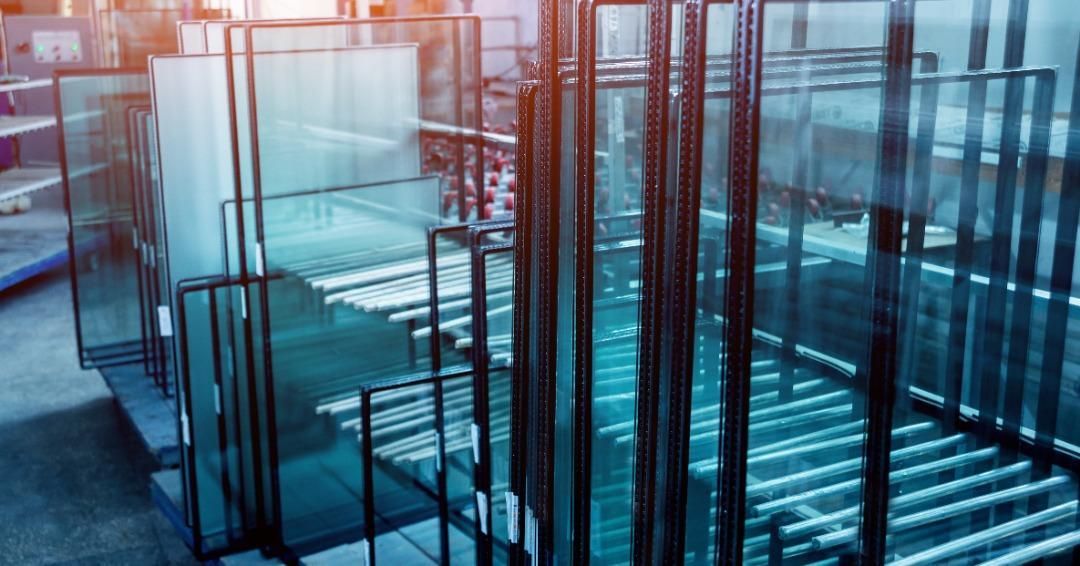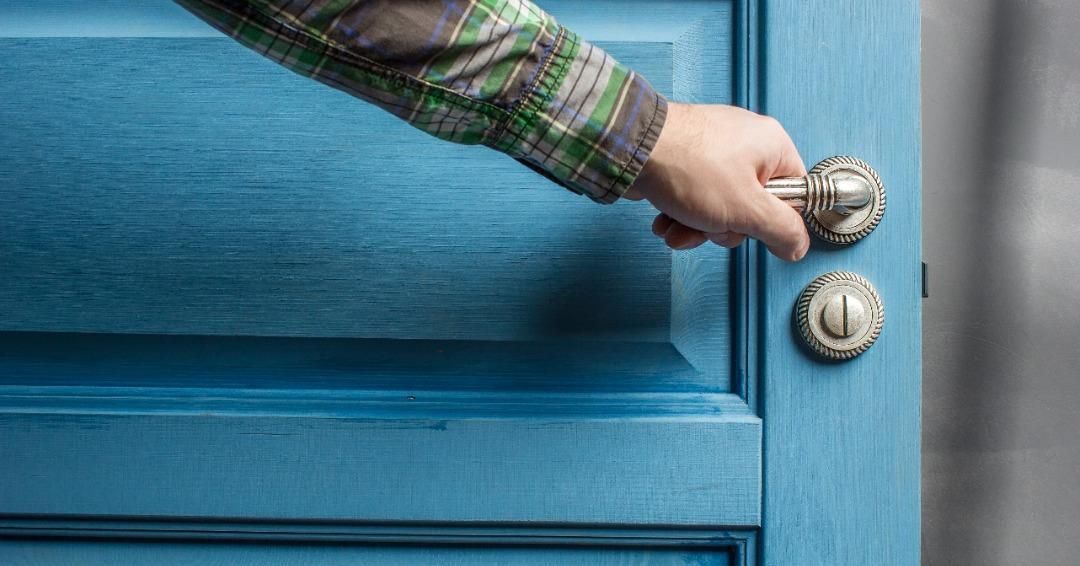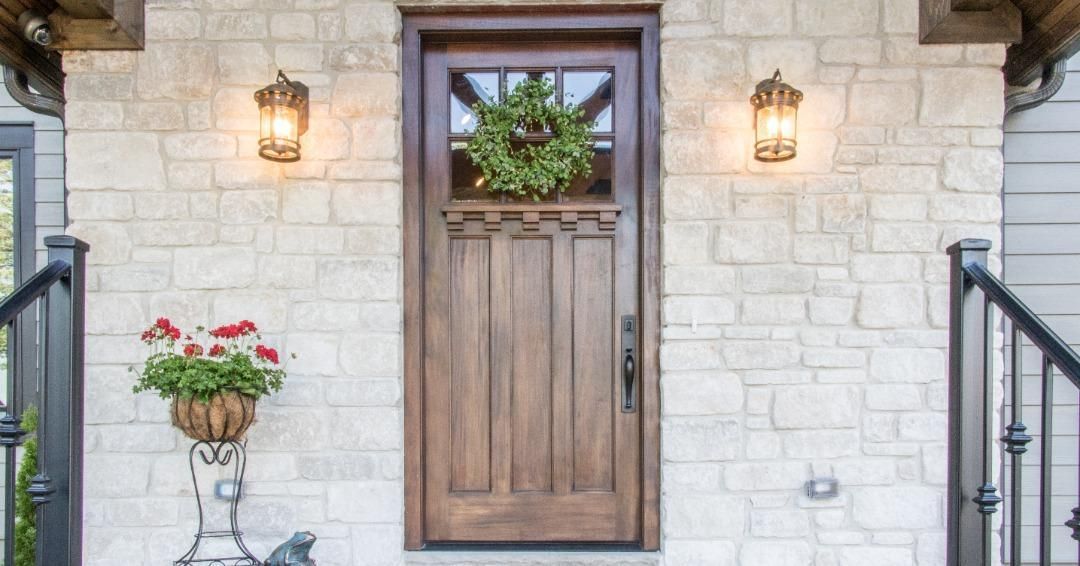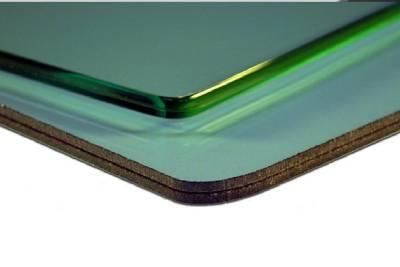What Is Annealed Glass

Annealed glass is a type of glass that undergoes a specific heat treatment process called annealing. This process helps to increase the strength and durability of the glass, making it less likely to break or shatter when exposed to stress or pressure. In this article, we will explore the basics of annealed glass, its manufacturing process, properties, uses, and advantages and disadvantages.
Understanding the Basics of Glass
Glass, a fascinating material we have used for centuries, is made through a complex process known as glassmaking. This process involves a careful combination of ingredients and precise temperature control to create the transparent, versatile material we rely on daily.
The Process of Glassmaking
The mixture of sand, soda ash, and limestone is at the heart of glassmaking. These ingredients are meticulously measured and combined in specific proportions to achieve the desired properties in the final glass product. Once the mixture is prepared, it is then heated to an extremely high temperature until it reaches a molten state.
The molten glass is mesmerizing as it glows brightly, radiating intense heat. In this liquid form, it is malleable and can be shaped into various forms. Skilled glassmakers utilize their expertise to manipulate the molten glass, whether pouring it into molds or blowing it into intricate shapes.
As the glass takes on its desired form, it is crucial to cool it down to avoid structural weaknesses gradually. This process is known as annealing, and it involves slowly lowering the temperature of the glass to relieve internal stresses. By carefully controlling the cooling process, glassmakers ensure the final product is strong, durable, and breakage-resistant.
Different Types of Glass
The glass comes in various types, each with distinct characteristics and applications. One such type is annealed glass, the most common form of glass. It is produced by slowly cooling the molten glass to relieve internal stresses, making it less likely to break under normal conditions.
Another type of glass is tempered glass, which undergoes a special heat treatment process that makes it stronger and more resistant to impact. Tempered glass is commonly used in applications where safety is a concern, such as car windows, shower doors, and glass tabletops. When tempered glass does break, it shatters into small, relatively harmless pieces, reducing the risk of injury.
Laminated glass is yet another type that is widely used in various industries. It consists of two or more layers of glass with an interlayer of plastic sandwiched between them. This interlayer provides additional strength and safety, as it holds the glass together when shattered, preventing it from breaking into sharp fragments.
Other types of glass include float glass, produced by floating molten glass on a bed of molten metal to create a perfectly flat and smooth surface, and borosilicate glass, which is highly resistant to thermal shock and is commonly used in laboratory equipment and cookware.
As you can see, the glass world is vast and diverse, with each type serving a specific purpose and offering unique advantages. From the windows in our homes to the screens of our smartphones, glass is an integral part of our modern society, providing us with clarity, protection, and aesthetic appeal.
The Science Behind Annealed Glass
Annealed glass is a type of glass that undergoes a specific process called annealing, which enhances its strength and durability. This process involves slowly cooling the glass to relieve internal stresses and improve its structural integrity.
During the annealing process, the glass is carefully heated to a high temperature and then gradually cooled down at a controlled rate. This controlled cooling allows the glass to undergo a molecular rearrangement, which helps to eliminate any residual stress that may have been induced during the manufacturing process.
One of the key benefits of annealing is its ability to increase the glass’s resistance to thermal stress. By gradually reducing the temperature, any potential sudden temperature changes are avoided, which could otherwise cause the glass to crack or break under pressure.
The Annealing Process
The annealing process is a critical step in glass manufacturing, as it significantly improves the mechanical properties of the glass. By relieving internal stresses, annealed glass becomes more durable and less prone to breakage, making it suitable for various applications.
Throughout the annealing process, the glass is carefully monitored to ensure the temperature is reduced optimally. This rate may vary depending on the specific type and thickness of the annealed glass. By controlling the cooling rate, manufacturers can achieve the desired level of strength and durability in the final product.
It is important to note that annealed glass should not be mistaken for tempered or heat-strengthened glass. While annealed glass is cooled slowly to relieve stress, tempered and heat-strengthened glass undergo different processes that increase strength and safety characteristics.
Properties of Annealed Glass
Annealed glass possesses several properties that make it suitable for various applications. Firstly, it is transparent, allowing natural light to pass through without significant distortion. This makes it an excellent choice for windows, display cases, and other architectural elements where clarity is essential.
In addition to its transparency, annealed glass also exhibits excellent optical clarity. This means the glass has minimal imperfections or distortions, allowing for a clear and unobstructed view. This property is particularly important in applications such as high-end camera lenses or microscope slides, where precision and accuracy are paramount.
Furthermore, annealed glass has a smooth surface, making it ideal for cutting, drilling, and polishing processes. This versatility allows manufacturers to customize the glass to meet specific requirements, making it a popular choice in the automotive, construction, and interior design industries.
Another advantage of annealed glass is its non-reactive nature and resistance to chemicals. This property makes it well-suited for use in laboratories, where it can withstand exposure to various substances without significantly changing its composition or physical properties.
In conclusion, annealed glass is a versatile and durable material that undergoes a carefully controlled cooling process to enhance its strength and resistance to thermal stress. Its transparency, optical clarity, smooth surface, and chemical resistance make it an excellent choice for various applications, from architectural projects to scientific settings.
Comparing Annealed Glass with Other Types of Glass
Annealed Glass vs. Tempered Glass
One of the main differences between annealed glass and tempered glass is its strength and safety characteristics. While tempered glass is stronger and more resistant to impact, it can shatter into small, relatively harmless pieces when broken. On the other hand, annealed glass can break into larger, sharp shards, posing a greater risk of injury. It is important to consider the intended use and safety requirements when choosing between these two types of glass.
Annealed Glass vs. Laminated Glass
Laminated and annealed glass also differ in safety and security features. Laminated glass consists of two or more layers of glass sandwiched with a polyvinyl butyral (PVB) interlayer. This interlayer provides added strength and keeps the glass intact when broken, making it harder to penetrate and providing higher security. However, laminated glass is usually more expensive than annealed glass.
The Advantages and Disadvantages of Annealed Glass
Benefits of Using Annealed Glass
One of the main advantages of annealed glass is its affordability compared to other types of glass. It is also relatively easy to produce, making it more readily available. Additionally, annealed glass can be easily cut and shaped to fit specific dimensions, allowing for customization in various applications and architectural designs.
Potential Drawbacks
Despite its many benefits, annealed glass has some drawbacks. It is more susceptible to breakage and shattering than tempered or laminated glass. Its use is also limited in areas where safety and security are major concerns, such as high-rise buildings or areas prone to extreme weather conditions.
In conclusion, annealed glass is a widely used type of glass that undergoes a specific heat treatment process to increase its strength and durability. It has various applications in both residential and commercial settings, offering transparency, versatility, and affordability. While it has certain limitations, understanding its properties and comparing it with other types of glass allows for informed decision-making when choosing the most suitable glass for specific purposes.









